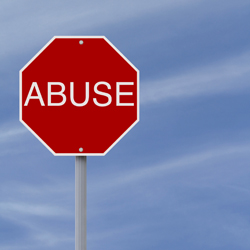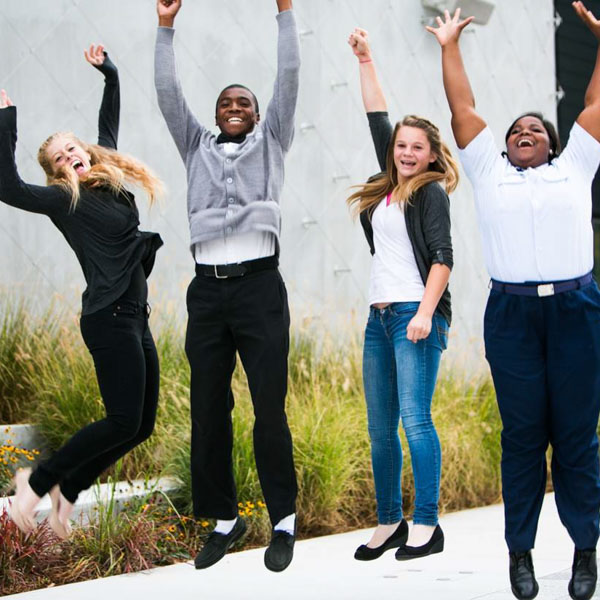By Curt Brungardt, Christie Brungardt
Abstract
One of the critical elements of effectively addressing any social issue in our society is the development and utilization of a rich body of knowledge. Thus, it is our hope and desire that this special issue of the eJournal of Public Affairs will add to the valuable literature focusing on higher education’s efforts to reduce gender violence. The material offered here is meant to help colleges and universities, victims and survivors, and policymakers better understand the issues surrounding such violence and identify effective ways to prevent and respond to it. This special issue includes four videos, four scholarly articles, and two feature pieces. We believe this material brings new ideas, best practices, and considerations to this important field of study and practice.

In the late 1800s an amazing transformation took place in American colleges and universities. Originating from the University of Wisconsin, the Wisconsin Idea encouraged institutions of higher education to engage their resources and energies in working toward solutions to public problems. One of the main factors driving this notable shift in institutional focus was a democratic effort to extend the benefits of higher education to a wider portion of the community and to repay the public by serving its needs. In his commencement address at the University of Wisconsin-Madison in 2010, U.S. Department of Education Secretary Arne Duncan said: As many of you know, the Wisconsin Idea was first articulated at the turn of the last century … The Wisconsin Idea holds that university scholars should work with government officials to both solve current problems and anticipate future ones. From opposite ends of State Street, the State Capital and the University—the twin domes of law and learning—are to communicate and assist each other. (http://www.ed.gov/news/speeches/wisconsin-idea) This philosophy still resonates in American higher education through the American Democracy Project (ADP). The goal of ADP is to produce graduates who are committed to being knowledgeable, involved citizens on their campuses and in their communities. The ADP Civic Engagement in Action Series encourages students to become deeply involved in substantive citizenship issues. The series asks students, faculty, and staff to not only “know” about current social issues but also to take action to solve those issues. Such action includes—but is not limited to—“an examination of the roles and actions of government agencies, advocacy organizations, and citizens in trying to address problems” (ADP, 2015). One issue that must be addressed is that of gender-based violence, and college campuses are logical places to promote that work. Colleges and universities are, in fact, plagued by gender-based violence. According to statistics from the Center for Disease Control and Prevention (2014), students are victims of sexual assault, intimate partner violence, and stalking at alarming rates. Consequently, the White House, the U.S. Department of Justice (DOJ), the U.S. Department of Education (DOE), anti-violence advocates, and victim activists from around the country are calling on colleges and universities to improve their efforts to prevent and respond to gender-based violence. On April 4, 2011, the DOE’s Office of Civil Rights released its “Dear Colleague Letter, 2011” outlining new requirements and enforcement guidelines to encourage educational institutions receiving federal funding to expand their role in reducing gender forms of violence (DOE, 2011). This federal mandate made it clear that higher education must effectively respond to sexual assault, domestic and dating violence, and stalking that impact their students and their employees. The “Dear Colleague Letter” clarified that sexual and dating violence are violations of equal opportunity under the 1972 Title IX Act. In 2013, Congress passed and President Obama signed into law the reauthorization of the Violence Against Women Act (VAWA). This law includes new provisions amending the 1990 Clery Act (often referred to as the Campus SaVE Act, adding additional requirements for colleges and universities. This new comprehensive legislation requires institutions to: enhance victim-rights provisions by establishing a baseline framework for institutions to respond to sexual assault and other intimate partner violence; expand prevention and awareness program requirements to include all incoming students and new employees; and to work with the DOJ and the DOE to collect and disseminate best-practices information about preventing and responding to sexual assault and other intimate partner violence. Later that year, the DOE’s Office of Civil Rights reinforced its case by releasing the “Dear Colleague Letter, 2013,” which warned schools not to retaliate against any victim who alleges that his or her institution is committing a civil rights violation. Then, in January of 2014, President Obama created the White House Task Force to Protect Students from Sexual Assault, which was assigned the responsibility of bringing government and NGO leaders together to provide recommendations for addressing this issue on college campuses. The resulting work of the task force was released later that year in the Not Alone report (White House Task Force, 2014), which was intended to help schools “live up to their obligations to protect students from sexual violence” (p. 2). Action steps and recommendations included: identifying the problem through campus climate surveys; preventing sexual assault and engaging men in this work; responding effectively when a student is sexually assaulted; and increasing transparency and improving enforcement (White House Task Force, 2014). This federal action has been a “wake-up call” for colleges and universities around the country. No longer can institutions of higher learning ignore, downplay, or act as unrelated or innocent bystanders to gender violence occurring on or near their campuses. The Bureau of Justice Statistics indicates that one in five women (20%) experiences sexual assault in her college years and that women ages 18-24 are at higher risk of dating/domestic violence and stalking than other populations (Fisher, Cullen, & Turner, 2000; Krebs, Lindquist, Warner, Fisher, & Martin, 2007). “Most often, [this sexual assault is committed] by someone she knows—and also most often, she does not report what happened. Many survivors are left feeling isolated, ashamed or to blame” (White House Task Force, 2014). In addition, women with disabilities, women of color, and international female students are estimated to be at greater risk than the general population. Men as well as women are victims of relationship violence, although at a lower percentage rate; college men suffer from dating abuse, sexual violence, and stalking. Victims of gender-based violence are also more likely to suffer academically from depression and post-traumatic stress disorder, abuse alcohol and drugs, and contemplate suicide (World Health Organization, 2015). In 2008, our daughter Jana Mackey, a 25-year-old law student at the University of Kansas, became one of these statistics. On July 3rd, she was murdered by a former boyfriend in Lawrence, Kansas. Sadly, what we have learned since that time is that our horrible story is not as uncommon as we would all like it to be. Whether we want to acknowledge the severity of the issue, the simple fact is that our students are facing gender-based violence daily. Jana was an advocate for women’s rights and had spent years volunteering to aid victims of sexual assault and domestic violence. She represented the new generation of American feminists. As a passionate social and women’s activist, Jana fought for equality and social justice at every turn. Her young life was filled with examples of a young successful activist. As an undergraduate women’s studies student, she organized the Kansas delegation of Kansas women who marched on Washington, DC, in 2004. She served as a staff member on both state and national campaigns for female candidates. She actively participated in the Kansas University Commission on the Status of Women, and from 2004 to 2006 Jana served as a lobbyist at the Kansas State Capitol, where she represented the Kansas National Organization for Women. With her years of activism, lobbying, and political experience, Jana believed that a law degree was the next step in her journey to become the most effective advocate possible for women and other underrepresented groups. The short video Jana’s Story captures some of Jana’s and our family’s story. Produced by Jana’s Campaign, Jana’s Story describes the devastating impact of losing a daughter to gender violence. It also encourages all of us to be actively involved in addressing this global social disease. Soon after Jana’s death, we both began the process of studying, researching, and learning as much as we could about gender and relationship violence. The learning curve was straight up. With support from our institution, Fort Hays State University, we began our journey as scholars in this new field. Additionally, and most importantly, we became engaged activists in the work. Between the two of us, we had over 40 years of experience in higher education, specializing in leadership education, civic engagement, and gender equality. Through our university work and our non-profit organization Jana’s Campaign, we are now informed and engaged faculty members and civic leaders working to reduce gender-based violence in our secondary schools, on college campuses, and throughout our communities. We believe that through this work, we are modeling our academic discipline for our students. We agree with and support the U.S. Administration’s work to bring pressure on American colleges and universities. It is clear that higher education’s role in preventing and responding to gender and relationship violence is paramount. We believe colleges and universities hold two important responsibilities. First, they must improve their efforts to prevent and respond to dating and sexual violence on their respective campuses. Second, higher education institutions must be mobilized to play a more active role in using their resources and assets to reduce gender and partner violence in the communities and states in which they reside. One of the critical elements of effectively addressing any social issue in our society is the development and utilization of a rich body of knowledge. Thus, it is our hope and desire that this special issue of the eJournal of Public Affairs will add to the valuable literature focusing on higher education’s efforts to reduce gender violence. The material offered here is meant to help colleges and universities, victims and survivors, and policymakers better understand the issues surrounding such violence and identify effective ways to prevent and respond to it. This special issue includes four videos, four scholarly articles, and two feature pieces. We believe this material brings new ideas, best practices, and considerations to this important field of study and practice. This special edition begins with four scholarly articles. In the first of these, Mellisa Holtzman and Chadwick Menning from Ball State University explore the idea that primary prevention and risk-reduction strategies have historically been treated as distinct categories of programming, with greater emphasis placed on primary prevention in recent years. The authors provide theoretical justification for—and explore the measurable benefits of –integrating primary prevention and risk reduction programming. Jennifer Gomez and her colleagues n bexamine the results and discuss the implications of a study conducted at one large public university around the question, “Do college students experience harm from participating in campus climate surveys?” In their article, “Cultivating Partnerships: A Case Study for Moving Beyond Campus-Centric Approaches to Sexual Violence Prevention,” William Fleming and Alan Heisterkamp of the University of Northern Iowa examine one university’s efforts to balance the institutional expectations of preventing sexual violence, while recognizing that effective prevention programming will require working with nearby secondary schools and domestic and sexual violence community agencies. The final scholarly article, by Deborah Cohan from the University of South Carolina Beaufort, explores the possible impacts that teaching about trauma has on both students and faculty members alike. Moreover, she addresses the special situation that contingent faculty have in supporting students who have experienced genderbased violence. The second section of this special issue provides two feature articles and two videos from practitioners sharing valuable voices which are often unheard in this work. First, Carol Groen and Jessica Albers from the Hays Medical Center in Hays, Kansas, highlight a successful, comprehensive, coordinated effort among a rural university, a regional medical center, and a local domestic and sexual violence agency to effectively respond to sexual violence. The article illustrates the benefits of creating a Sexual Assault Nurse Examiner/Sexual Assault Response Team (SANE/SART) program in a rural setting. In the second feature article, Alexander Shaw, a residential life hall director at Fort Hays State University discusses possibilities and opportunities that exist between student affairs professionals and academic affairs faculty to jointly address inappropriate and harmful resident behaviors. The first video, Voices from the Heartland, was produced by Paul Kyle and staff at Johnson County Community College (JCCC) in Overland Park, Kansas. It shares the story of a regional conference—the Heartland Campus Safety Summit—designed to better educate higher education officials about improving their prevention and response efforts. The summit is a product of Jana’s Campaign and JCCC. The final video features one regional university’s efforts to educate an entire campus and community about the issue of gender violence. Produced by Sadie Spurlock, the video spotlights Fort Hays State University’s fifth year of hosting The Red Flag Campaign on its campus. This campaign takes place every October to help raise awareness of gender violence and to encourage bystander intervention. As guest editors, we would like to thank the staff at the eJournal of Public Affairs and the many reviewers who committed their knowledge and expertise to this special issue. Most importantly, we would like to thank the contributing authors and the video producers. Their work has added to a crucial intellectual discussion and has provided practitioners with additional best practices. Lastly, we dedicate our work on this special issue to Jana and all victims of gender-based violence. Know that we are working every day to eradicate this social disease. We conclude our opening remarks by sharing a video which includes a speech delivered by Dr. David Lisak, nationally recognized forensic consultant, trainer, and lecturer, at the Dartmouth Summit on Sexual Assault in July of 2014. His remarks discuss his personal journey and how that journey has informed his research. They also outline the major issues and themes that colleges and universities must address to become more effective in both prevention and response to gender violence. We believe this video is a powerful way to frame the complexities of this issue to our audience.




